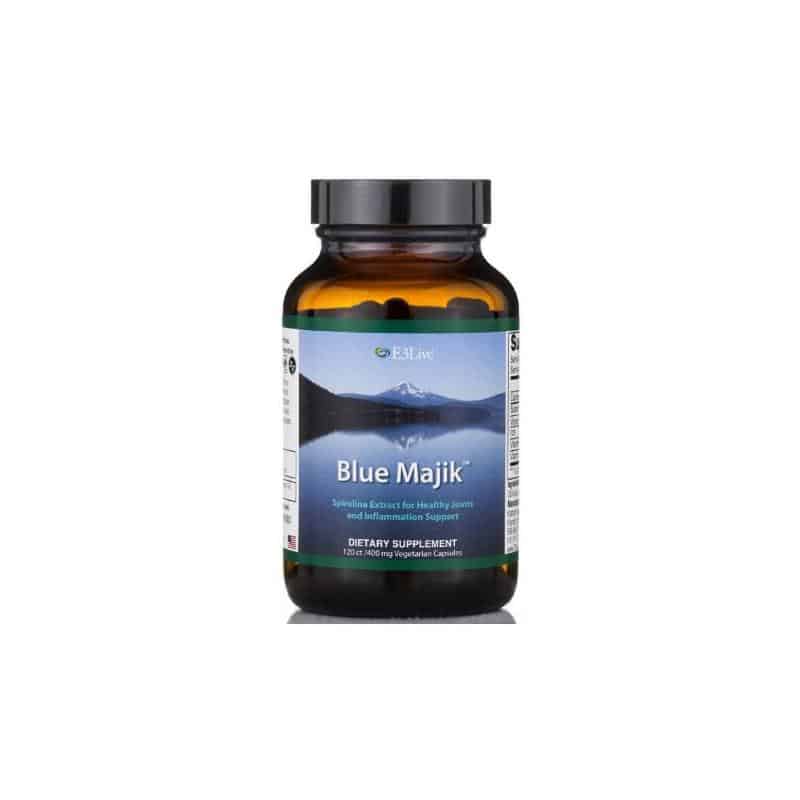No products in the cart.
Tigernuts
I love nuts, but unfortunately, my body does not appreciate them. Nuts, even though they are an amazing source of healthy fats, vitamins, and minerals, are usually not an ideal choice for those of us who suffer from any kind of digestive issues.
Nuts and seeds are also not recommended for autoimmune (AI) patients, and it is always important to eliminate them completely for at least a few weeks or months. Tree nuts are very common allergens. Some people are sensitive to larger amounts of nuts, some suffer from severe allergies and will be sick (or in anaphylaxis) after smelling nuts on someone’s breath. You might be okay with eating a handful of almonds from time to time, but you may notice that eating them a few days in a row might cause digestive or skin problems (or both). Dr. Sarah Ballantyne talks about why nuts are so problematic for AI patients in her post here, and surprisingly, lectins and phytic acid present in nuts and seeds are not the main reason why people who have a compromised immune system should avoid them. In the past we talked about the importance of soaking nuts to get rid of some of the antinutrients and make them easier to digest, but even after removing these harmful substances, nuts and seeds can still hurt your gut, making the healing process very difficult, similar to putting more fuel onto the fire while trying to put it out at the same time (you can’t put out a fire with alcohol!).
My friend sent me a bag of sliced tigernuts for Christmas, and I remember her talking about them in the past. I had never heard of tigernuts before, so I was curious to try them and learn more about them. If nuts are not allowed on the autoimmune protocol, what makes these an exception? Tigernuts aren’t actually nuts. These small wrinkly beads that look very similar to Tropaeolum seeds, are tubers of the cyperus esculentus plant. They grow under ground, like potatoes, but they are about the size of a chickpea, and they have a very pleasant, mildly sweet taste (similar in flavor to almonds). They grow as a wild weed all over the world, and they have been growing on this planet for a very long time. Tigernuts, also known as chufa, earth almonds, or nut grass, are nutritious, and naturally gluten free (and of course soy, dairy, and grain free). They are a great source of resistant starch, which is a prebiotic fiber that feeds the friendly bacteria in your gut (unhelpful bacteria may also feed off of it, so if you are still treating SIBO or dysbiosis, wait to try tigernuts after you have resolved these issues). Healthy, happy gut flora are essential for digestive and immune health, so be sure to “weed and seed” appropriately. You can also read this great post by Chris Kresser, talking about all four types of resistant starch, their sources, benefits, and effects on our overall health.
Tigernuts are also a good source of magnesium, iron, and zinc. About half of their calorie content is fat. Their fat profile is similar to olive oil, with 72% monounsaturated, 18% saturated, and 9% polyunsaturated fatty acids. Low content of inflammatory polyunsaturated fats (PUFA) actually makes them an even better option than some nuts (like walnuts or pecans, which are high in PUFA). We already covered different types of PUFA in our Fat Story, and we like to talk about the importance of healthy fats a lot because fat itself has been demonized for decades as a contributor to many modern diseases including cancer, heart failure, and brain damage. But fat is extremely important for our health! Every cell in our body needs it to work properly, recover, and multiply. It is the type of fat that matters the most, and tigernuts offer 7 grams of healthy fats per one ounce (around a handful of whole, dried nuts), along with 2 grams of protein and 19 grams of carbohydrate (10 of which is fiber). There is a study that was performed by Oxford University showing that our ancestors from 2.3 million years ago ate around 80% of their calories from foods like grasses and sedges, including tubers of the cyperus esculentus plant. In ancient Egypt, tigernuts were chopped into small pieces, mixed with dates, honey, and spices and formed into small balls for a bite-sized dessert.
Today, these small tubers are an ideal baking option for those who have to stay away from nuts and gluten. You can get them as whole nuts, sliced, or in the form of flour. Sliced tigernuts are a wonderful raw snack option; they can be sprinkled over a bowl of yogurt, used as a salad topping, combined with coconut flakes and dried fruit to make granola/muselix, or eaten straight from the bag (that is how I love to enjoy them). They are soft but crunchy, slightly sweet, and very similar to sliced almonds in taste and texture. Whole nuts are dried (for a longer shelf life), so they should be soaked in water prior to eating them. After at least 12 hours in water, they will expand and soften, but still stay a bit crunchy. Tigernut flour is an excellent, safe option for baking grain free, autoimmune friendly treats. Baking with grain free flours is usually not as easy as using plain white flour – the texture and final results are very different and it takes some time to get used to working with the new ingredients (especially if you were used to using regular wheat flour in the past), but with tigernut flour, you will be getting a delicious treat full of prebiotic fiber without gluten and other common allergens. It tends to work best when combined with a gummier flour like arrowroot or tapioca as tigernut flour can be a bit dry/crumbly.
There is a great post on Food52 about baking with tigernut flour – if you are a curious baker, check it out. I love baking, and since my body isn’t happy with nuts, and I don’t want to use coconut flour all the time, tigernut flour will definitely become a staple in my AI friendly pantry. Susanne recently made these cookies and when I saw the picture, I had to try them too. We both used lard instead of palm shortening, and they were super delicious – so good that I had to make another batch two days later! If cinnamon isn’t your thing, they are good as plain vanilla cookies, with chocolate chips, cacao powder, lemon peel and craisins, or as jam thumbprint cookies. If you are a waffle lover, check out this recipe, if you are more of a pancake person, here is an option for you. But you don’t need to use tigernut flour just for sweet treats, here is a great recipe for a savory breakfast waffle. Tigernut flour and arrowroot flour can also be combined in roughly equal amounts to make a breading for chicken strips (be sure to pan fry with lots of fat and salt to taste, dipping the chicken pieces in either water or egg to help the mixture stick). One thing you might miss when eliminating nuts from your diet is nut milk. For those of us who stay away from conventional dairy and don’t really enjoy coconut milk that much, nut milk is very often a great substitute. You can actually make tigernut milk! This milk is made of ground tigernuts, water, and optional sweetener or spices. This beverage is known as horchata, and it is a traditional beverage in Spain, Latin America, and Northern Africa. There are pre-made options available in stores, but they are usually loaded with unnecessary ingredients like rice flour, artificial sweeteners, canola oil, or carrageenan (always read your labels), and it is also pretty expensive.
It is much easier, cheaper, and safer to make your own tigernut milk at home, using the same method you would use for regular nut milk. There is a recipe here, if you need detailed instructions. Feel free to skip the sweetener and/or spices and just use tigernuts and water to make a plain milk, or experiment with your own combination of spices. Keep in mind that by straining away the fibrous part of the nuts, you are getting rid of most of the resistant starch tigernuts are so valued for, so if you want to enjoy all the benefits of the fiber, be sure to also include other forms of tigernuts in your diet. You can also dehydrate the leftover pulp from the milk and use it later in baking or cooking. Just before finishing this post I started to wonder if there is such a thing as tigernut butter, and there is! This No-Nut Tigernut Spread might be a game changer for nut butter lovers who can’t or don’t want to consume nuts. This butter would be amazing served with apple slices, or drizzled over a salad, or as the author of the recipe suggests, blended into a smoothie! You can also get your hands on tigernut oil or pre-made granolas (but again, read your labels here).
Tigernuts are not some kind of miracle food that will give you all the nutrients you need and more, but they are definitely a wonderful, nutritious addition to your plate and pantry, especially if you struggle with nut allergies or autoimmune issues that bring a lot of limitations to your diet. The resistant starch in these tubers is the ideal food for your gut bacteria, and they are very tasty for the human palate (I actually prefer them to nuts after trying both sliced tigernuts, and flour), versatile, and the price point is very comparable to almonds (and almond flour). Buying tigernuts online is probably the easiest option, but you might be able to find them in local shops and save some money on shipping.








